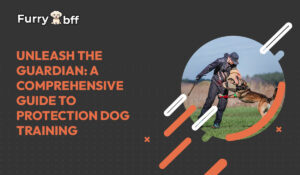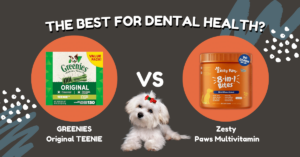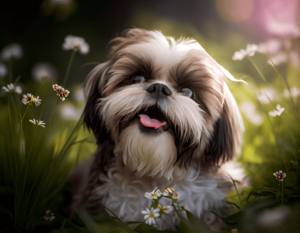Hypoallergenic dogs have been around, for quite some time. The idea of barking hypoallergenic dogs is relatively new. People with allergies often struggle to find a pet that won’t trigger their reactions. Similarly for those living in apartments or close quarters with others finding a dog that doesn’t bark incessantly is equally important.. How did these particular breeds come into existence? In this blog post we’ll delve into the history of barking hypoallergenic dogs.
Basenji;
The Basenji is a breed of dog known for its traits and fascinating background. Lets take a look at the Basenji breed;
Origin and History;
The Basenji stands as one of the known breeds originating from Africa. Indigenous people in the Congo region used them for hunting game and as trusted companions. The breeds unique characteristics, such as its yodel bark and natural cleanliness (often referred to as the “barkless dog” due to its vocalizations) are outcomes of centuries of natural selection within their native environment.
Physical Characteristics;
Basenjis are dogs, with a well built and sleek physique.
They possess a fur that comes in shades, such, as red, black, brindle and tricolor. Basenjis are recognized for their wrinkled foreheads and eyes shaped like almonds. One of their attributes is their curled tail positioned over their back.
Temperament;
Basenjis exhibit intelligence, independence and curiosity. People often compare them to cats due to their grooming habits and reserved nature. While they show loyalty and affection towards their families they may be cautious around individuals. Their hunting background has instilled a prey drive in them. It’s important to exercise caution when introducing them to small animals.
Vocalization;
The Basenjis unique vocalizations have earned it the nickname “barkless dog.” Of barking like other dogs Basenjis produce an array of sounds ranging from yodels to howls and growls. This distinctive trait is a result of their composition. Was favored in their ancestral environment where traditional barking could alert potential prey.
Exercise and Training;
Basenjis are lively canines that require physical activity as well as mental stimulation. While they possess intelligence that makes training enjoyable they also have a streak which may not always make them eager to please. Early socialization along with training play roles, in ensuring a well behaved adult dog.
Health Considerations;
Like any breed Basenjis may have health issues. Basenjis are more prone, to developing Fanconi syndrome, a kidney disorder compared to breeds. Responsible breeding practices and regular veterinary care can help minimize health concerns.
Basenjis are a breed with a history and unique characteristics. Their independent nature, vocalizations and hunting background make them an intriguing choice for dog owners who can provide the necessary care, training and attention.
Xoloitzcuintli
The Xoloitzcuintli, also known as the “Xolo ” is an ancient dog breed that holds cultural and historical significance. Here is a brief overview of the Xoloitzcuintli breed;
Origin and History;
The Xoloitzcuintli has roots in civilizations like the Aztec and Maya cultures. It is considered one of the dog breeds in the Americas with a history dating back thousands of years. The name of this breed combines “Xolotl,” the god associated with lightning and death with “itzcuintli,” which means dog, in Nahuatl—the language.
Varieties;
Xolos come in three different size varieties; toy, miniature and standard.They can come in two forms either with hair or, without. The hairless Xoloitzcuintli has tough skin with a few patches of hair on the head, tail and feet. On the hand the coated Xoloitzcuintli has an flat coat that can vary in colors. One interesting characteristic of the hairless variety is that their body temperature tends to be slightly higher than dogs due to their lack of fur.
Temperament;
Xolos are known for being loyal, intelligent and protective. They form bonds with their families. Might be a bit reserved around strangers. They usually get along well with children. Often show affection towards their owners. It’s important to socialize them from an age so they can learn behavior around other dogs and new situations.
Health Considerations;
Overall Xolos tend to be dogs but there are a health concerns to keep in mind. Hairless Xolos are more prone to skin issues like sunburn, acne and dry skin. Dental care is especially important for Xolos since the hairless variety can experience problems due to the absence of fur in their mouths.
Significance;
The Xoloitzcuintli holds cultural significance in Mexico and other Mesoamerican regions. It was considered a dog, by the Aztecs who believed it possessed healing abilities well as protective powers.
Xolos were commonly kept as companions, guardians and even used in ceremonies. Today they hold importance as a treasure, in Mexico and continue to be revered for their historical and cultural significance.
Exercise and Training;
Xolos are dogs that require physical activity to maintain their well being and happiness. They enjoy going for walks engaging in mental stimulation. When it comes to training a positive consistent approach with rewards works best. Thanks to their intelligence Xolos can excel in dog sports and activities.
The Xoloitzcuintli is a breed with a past and cultural significance. It is renowned for its appearance. Affectionate nature. Caring for a Xolo requires understanding their needs providing care and respecting their heritage.
Chinese Crested;
The Chinese Crested is a dog breed known for its look characterized by mostly hairless body with tufts of hair, on the head, tail and feet. Here’s an overview of the Chinese Crested breed;
Origin and History;
Although the exact origin of the Chinese Crested remains debatable it is believed to have originated in China where it was often kept aboard ships to control vermin. Sailors and traders cherished them as companions which led to their presence spreading across parts of the world.
There are two types of coats, for Crested dogs; Hairless and Powderpuff. It’s possible for both types to be born in the litter.
Hairless Variety;
The hairless Chinese Crested has skin that is susceptible to sunburn and needs protection from the elements. They can have colors and patterns of hair on their head (crest) tail (plume) and feet (socks). Despite not having fur hairless Chinese Cresteds are known for their nature and enjoyment of contact.
Powderpuff Variety;
The Powderpuff Chinese Crested has a coat of silky hair that comes in a wide range of colors. Regular grooming is necessary to prevent matting and keep their coat healthy. Powderpuffs typically shed less than breeds, which can make them an attractive option for those with mild allergies.
Temperament;
Chinese Cresteds are recognized for their lively personalities. They often develop bonds with their owners. Enjoy being close to them. They can be attuned to their owners emotions. Are sometimes referred to as ” dogs” because they like being, near their loved ones. While they generally get along well with children and other pets proper socialization is crucial.
Exercise and Training;
Cresteds are dogs that enjoy being moderately active engaging in playtime and going for walks. They don’t need exercise. Its still beneficial to provide them with mental stimulation and social interaction. When it comes to training it’s important to maintain an approach, consistency and focus on building a bond with the dog.
Health Considerations;
While generally, in health the hairless variety of Cresteds can sometimes be prone to skin issues, sunburn and dental problems. It’s essential to take care of them by using sunscreen for protection from the sun and maintaining dental hygiene. Dental issues can also affect the Powderpuff variety so dental care is crucial regardless of coat type.
Appearance and Aesthetics;
The Chinese Crested has an appearance that often captures attention and can serve as an interesting conversation starter. Some people are attracted to their look. Appreciate the opportunity to care for a breed with specific grooming needs for their coat or skin.
The Chinese Crested is a breed with a loving nature and remarkable appearance. Prospective owners should be aware of their grooming requirements. Consider their sensitivity to factors due to the exposed skin of the hairless variety.
Italian Greyhound;
The Italian Greyhound is known for its elegance as a breed. They have a build coat and are naturally affectionate, in nature.
Here’s a brief overview of the Italian Greyhound breed;
Origin and History;
Italian Greyhounds have a history that can be traced back, to Egypt and Greece. They were highly esteemed as companions for royalty. Were frequently portrayed in artworks. Despite their name this breed likely originated in the Mediterranean region. Was later refined in Italy. During the Renaissance period Italian Greyhounds gained popularity among nobility. They continue to capture the hearts of dog enthusiasts worldwide.
Physical Characteristics;
Italian Greyhounds are dogs with a build giving them an elegant appearance. They possess an fine coat that comes in colors such as fawn, blue, black and more. Their coat requires grooming making them low maintenance when it comes to grooming needs.
Temperament;
Italian Greyhounds are known for their affectionate nature. People often describe them as “couch potatoes” due to their enjoyment of lounging and staying close to their owners. Although they have a demeanor they do experience bursts of energy when they engage in playful running sessions. They tend to form bonds with their families and develop attachments, to their human companions.
Exercise and Training;
Although Italian Greyhounds have a demeanor indoors it’s essential to ensure they get exercise to maintain their health and happiness. They quite enjoy bursts of moderate walks. Given their nature, positive, gentle and consistent training methods work best for them. They respond positively to techniques that involve rewarding behavior.
Health Considerations;
Italian Greyhounds are generally, in health; however they can be prone to health issues. Their slender physique makes them more susceptible to fractures. It’s important to prevent falls and injuries. Dental care is also crucial as they may experience problems often. Moreover due to their coat they can feel the weather more intensely than other breeds making it necessary to provide them with extra warmth during chilly seasons.
Indoor Living;
Italian Greyhounds adapt well to living arrangements. Are excellent companions for apartment dwellers because of their small size and low exercise needs. They find comfort in snuggling up with their owners and enjoy the environment indoors.
Companionship;
Italian Greyhounds thrive on companionship. Prefer being, around family members whenever possible. If left alone for periods they may experience separation anxiety; hence providing them with company and mental stimulation is vital.
The Italian Greyhound is an loving breed that serves as a companion, for individuals who can offer them affection, care and regular exercise. With their appearance and gentle temperament they have been cherished pets for centuries.
In conclusion;
For those seeking a companion but having allergies or residing in apartments dogs that don’t bark are an ideal choice. From the Basenji, known for its silence, to the Greyhound there are various breeds available to choose from. While the concept of barking dogs may be relatively new their history can be traced back thousands of years. If you desire a dog that won’t cause commotion these captivating breeds should definitely be considered.









